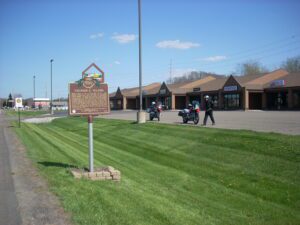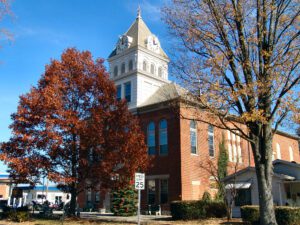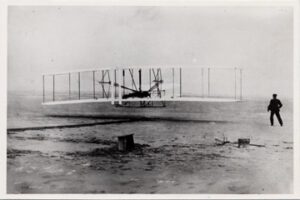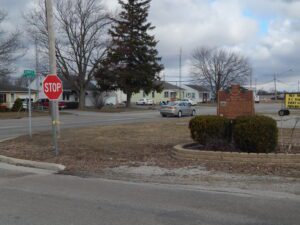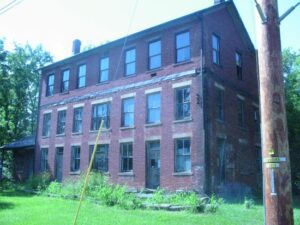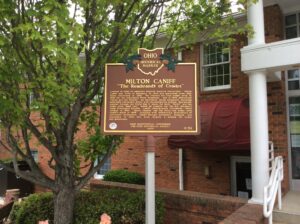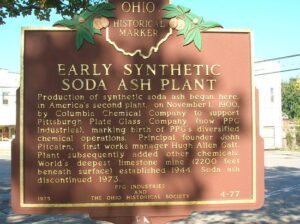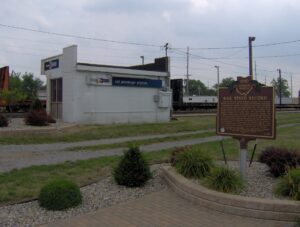, OH
Charles E. Wilson was born on July 18, 1890 in Minerva. After earning a degree in electrical engineering from the Carnegie Institute of Technology in 1909, he joined the Westinghouse Electric Company in Pittsburgh before moving to General Motors in Detroit in 1919. By January 1941, Wilson had become president of General Motors, and during World War II directed the company’s huge defense production efforts, earning him a U.S. Medal of Merit in 1946. While still with General Motors, President Dwight Eisenhower selected him as secretary of defense in January 1953. During his confirmation hearings, Wilson said, “What was good for the country was good for General Motors and visa versa,” but was interpreted as saying solely, “What’s good for General Motors is good for America.” He served Eisenhower for four years, reorganizing the department of defense to effectively deal with missile and nuclear technology. He died in Norwood, Louisiana, on September 26, 1961.
, OH
The Richwood Opera House and Town Hall was erected in 1890 as a community center designed to house the town council chambers, fire department, jail and opera house. The Richardsonian Romanesque styled building served Richwood in all these capacities for nearly 75 years. The Opera House was the site of minstrel shows, concerts, movies, lecture courses, revivals, farmers’ institutes, commencements, and community meetings. The second floor gymnasium was used for a men’s independent basketball league, dance classes, and as a teen center after World War II. Construction of an interurban railway running between Richwood and the resort town of Magnetic Springs in 1906 provided an expanded audience for the Opera House. (continued on other side)
, OH
In 1899, Wilbur and Orville Wright of Dayton built a kite to test a revolutionary flight control system, and in 1900, built their first airplane (glider). With promising results, the Wrights built man-carrying gliders and airplanes to refine their ideas. Wind tunnel experiments led to accurate calculations of lift and drag. In 1903 in Kitty Hawk, North Carolina, they made the first sustained, controlled, powered flight in history, lasting 12 seconds. By 1905, the Wright brothers had developed the first practical airplane and the skills to pilot it. The U.S. Army Signal Corps purchased a Wright flyer, the first practical military aircraft, in 1909. Through public demonstrations beginning in 1908, the Wright brothers showed the world the future of aviation.
, OH
Here, on September 6, 1918, Bryan’s Air Mail Field began operations as one of Ohio’s first official airfields with the arrival of a survey flight to establish air mail service between New York and Chicago. Scheduled service began on July 1, 1919, and stretched west to San Francisco on September 8, 1920, completing the 2,666 mile U.S transcontinental air mail route. Flying the Curtiss JN-4H “Jenny,” R-4, Standard JR-1B, and later, the De Havilland DH-4, aviators pioneered cross continental flight in open cockpit biplanes without radios or electronic navigational aids and reduced coast to coast mail delivery from 87 hours by rail to 33 hours by air.
, OH
This historic inn began serving travelers on the old Portage-Columbiana stage road (now Tallmadge Road) in 1832. Two major stage lines, one from Cleveland to Wellsville (the closest Ohio River port) and the other from Cleveland to Pittsburgh, passed through Palmyra in the early 1800s. Originally a simple two-story Greek Revival-style building, it had its third story added in 1888 when it became a lodge for the Knights of Pythias fraternal organization. It served as a private residence and store for most of the 20th century. The Palmyra Center Hotel was added to the National Register of Historic Places in 1976.
, OH
Creator of some of America’s favorite cartoon characters, Milton Caniff was born in Hillsboro in 1907 and graduated from Ohio State University in 1930. He created his first comic strip in 1932 for the Associated Press Syndicate, and in 1934 introduced “Terry and the Pirates,” an innovative serial adventure featuring believable characters drawn with unprecedented realism. Enormously popular through the World War II years for both “Terry” and the comic strip “Male Call,” which he created for the U.S. military’s Camp Newspaper Service, Caniff subsequently introduced “Steve Canyon” in 1947. “Steve Canyon” ran for forty-one years until Caniff’s death in 1988. Credited with influencing generations of successful cartoonists, Caniff brought adventure, suspense, and sensuality to what had been largely a medium for humor and melodrama.
, OH
Production of synthetic soda ash began here, in America’s second plant, on November 1, 1900, by Columbia Chemical Company to support Pittsburgh Plate Glass Company (now PPG Industries), marking birth of PPG’s diversified chemical operations. Principal founder John Pitcairn, first works manager Hugh Allen Galt. Plant subsequently added other chemicals. World’s deepest limestone mine (2200 feet beneath surface) established 1944. Soda ash discontinued 1973.
, OH
In 1966 the New York Central Railroad Company (A.E. Perlman, President) proposed a test of existing rail passenger equipment to determine the feasibility of operating high-speed passenger service between cities up to 300 miles apart. The site chosen for the test was near Bryan, Ohio on the longest multiple track straight railroad line in the world. This sixty-seven mile straight trackage from Toledo, Ohio to Butler, Indiana was originally constructed by the Northern Indiana Railroad Company of Ohio incorporated March 3, 1851. On July 23, 1966 the New York Central Technical Research Department ran their Budd RDC-3 passenger car number M-497 fully instrumented for stress analysis, and propelled by two roof-mounted jet aircraft engines. The speed of 183.85 miles per hour was attained, the highest recorded on a railroad in North America at that time and to this day.


